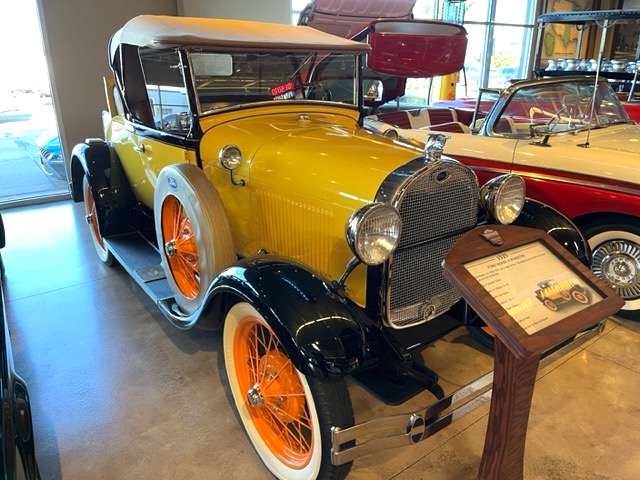
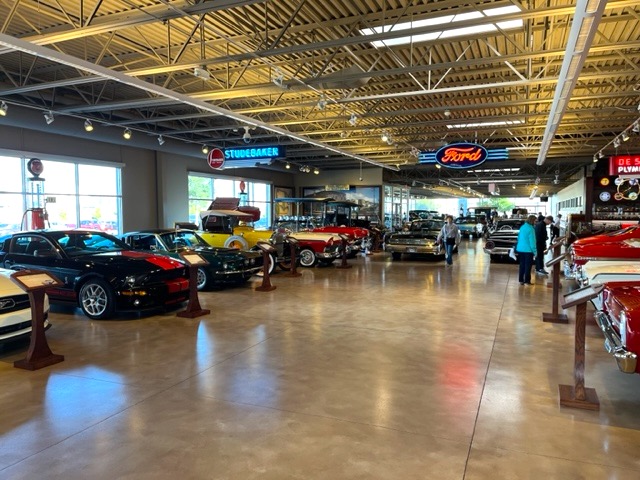
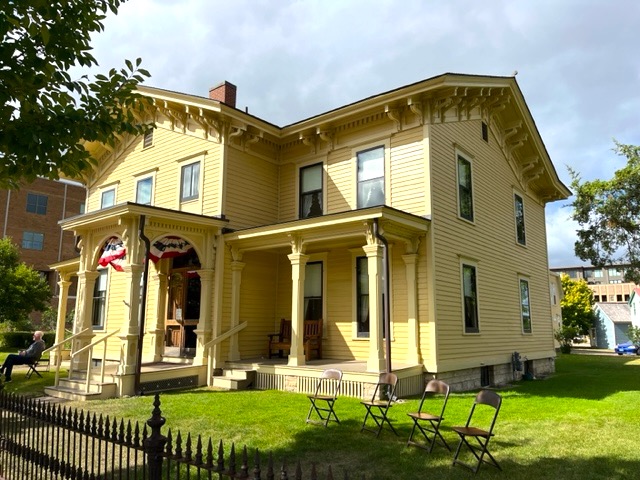
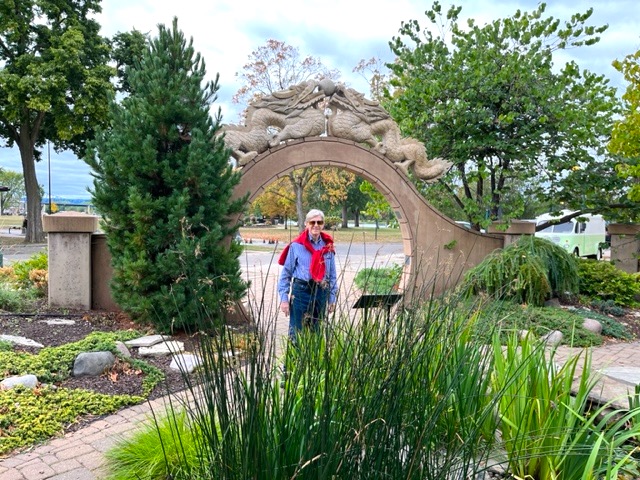
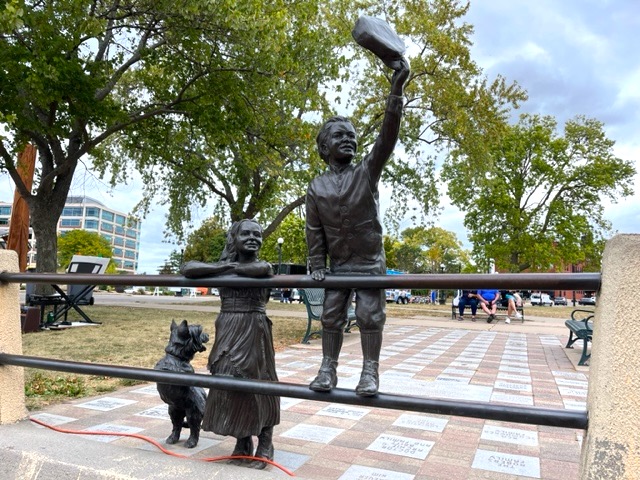
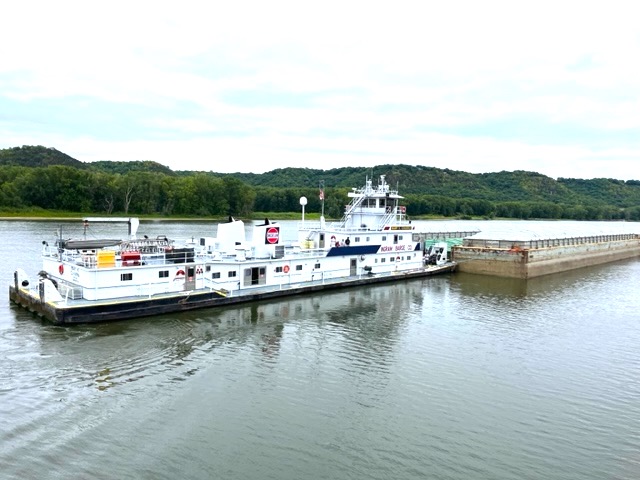

The weather on this day was considerably cooler with a low of 58 degrees and a high of 68. Much cooler than the 90 degree plus weather that we were having over the last week. We were in port until 1:00pm when we set sail for our next port — Dubuque, Iowa.
Breakfast in the morning each day consists of a large variety of options to choose from. For starters they offer coffee, fresh juices, berries, fruit plates, eggs any style, bacon, sausage, potatoes, oatmeal, toast, English muffins and more. Then each day there is a daily changing menu including items like eggs benedict, French toast, pancakes, quiche or other specialty breakfast items.
La Crosse is a regional technology, medical, education, manufacturing and transportation hub with a city population of about 55,000 residents and about 140,000 in the metropolitan area. The University of Wisconsin-LaCrosse, Viterbo University and Western Technical College combined have about 20,000 students. It is believed that European fur traders were the first to see the region in the late 17th century although there is no written record of any visit until 1805 when Lt. Zebulon Pike mounted an expedition up the Mississippi for the US. Pike recorded the location as “Prarie La Crosse” from a game with sticks that resembled a bishop’s Crozier (Staff) and was played by Native Americans there. In 1841, the first settlement was established when Nathan Myrick, a New York native moved to the area to work in the fur trade. Instead of the fur trade he opened a trading post. By 1844, a small Mormon community had settled in La Crosse, building several dozen cabins in the area.
During the second half of the 19th century, La Crosse grew to become one of the largest cities in Wisconsin. It was the center of the lumber industry since logs cut in the interior of the state could be rafted down the Black River toward sawmills built in the city.
During our stay, we visited the Dahl Auto Museum where five generations of the Dahl family have owned Ford dealerships. They currently operate dealerships in La Crosse and Onalaska, Wisconsin, as well as Winona, Minnesota. The museum includes about 20 antique and classic cars highlighting each decade since the Dahl families first dealership in 1911. They also feature a fairly substantial hood ornament collection.
Our next stop was at the Hixon House with 4,700 square feet, built in 1858, by pioneer Gideon Hixon, a wealthy lumber baron. The family had retained it in the original state that wife, Ellen Hixon had left it when she died in 1913. In 1965, their descendants gifted the house to the La Crosse Historical Society complete with its original Victorian Arts and Crafts furnishings. The home is very plain from the exterior although the interior is extremely ornate and filled with tons of family heirlooms. A major restoration was completed in 2004 to paint, restore wallpaper, clean, reupholster furniture in keeping with how it was when the Hixons were alive. Several docents took us on a 30-minute guided tour of the lower level of the property pointing out all of the interesting furnishings and accessories in the home.
Next, we visited the La Crosse Area Heritage Center where we saw exhibits on the Ho-Chunk native tribes’ history, steamboats, the logging industry, beer making, fishing and early manufacturing. The Ho-Chunk was the dominant tribe in the area in the 16th century with an estimated population of several thousand.
The shopping avenue in town is called Pearl Street and that is where Kent found the Wisconsin cheese curds that he had been looking for. He selected the garlic flavored cheese curds and found them to be very satisfying. In Wisconsin, it is the cheese!
Our final stop of the day was at the Riverside International Friendship Garden built in celebration of La Crosse’s relationship with its sister cities. It features a Chinese garden using the elements of Feng Shui, a more formal French garden with finely trimmed plants, a German garden using hydrangea, roses and fruit bearing shrubs. A Norwegian garden includes many waterfalls, rhubarb, strawberry and blueberry plants, making it not only beautiful, but also aromatic. A Russian garden with a pergola and many sculpture pieces among the tree-filled groves was also there.
In the afternoon we sailed south towards Dubuque, Iowa. Along the way we marveled at how wide the river was and how many islands of trees there are with the water meandering far and wide around patches of land. We passed under many bridges and along many small towns. The banks are green with trees and we continue to pass through many locks along the river. In total there are something like 27 locks that we must pass through along the upper Mississippi.
The night’s entertainment was an evening with Mark Twain. A gentleman dressed as Mark Twain, gave a forty-five-minute dialog about the life of Mark Twain, where he lived, about his family and some of the stories and experiences leading him to be the author he became. His stories were cleaver and funny at times.
